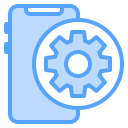Prototype, Measure, Decide
Include navigation, one complex list, one native capability, and analytics. Keep it small but representative of your riskiest assumptions so signals arrive quickly and clearly.
Prototype, Measure, Decide
Track cold start, bundle size, memory at peak, scroll FPS, crash rate, and developer loop times. Publish results to your team to ground decisions in transparent evidence.







